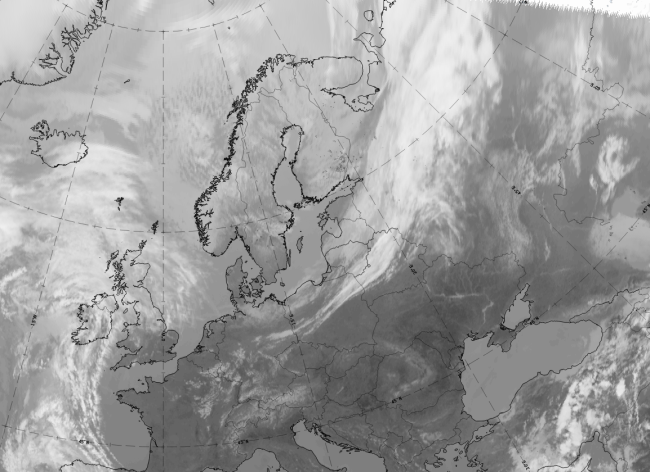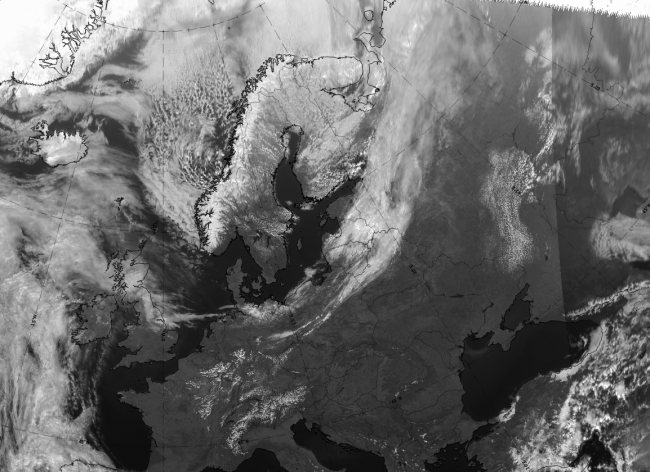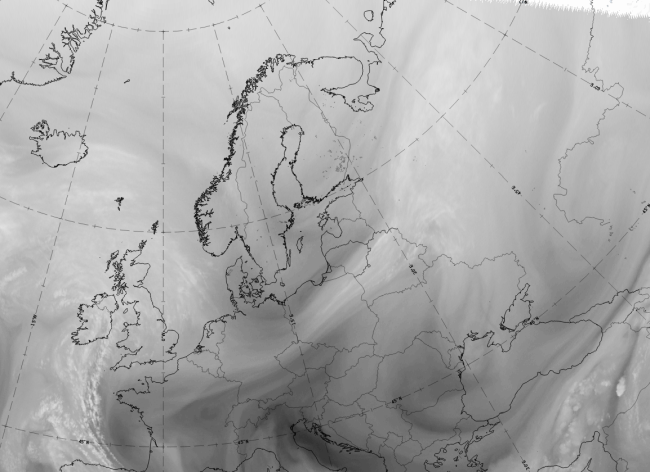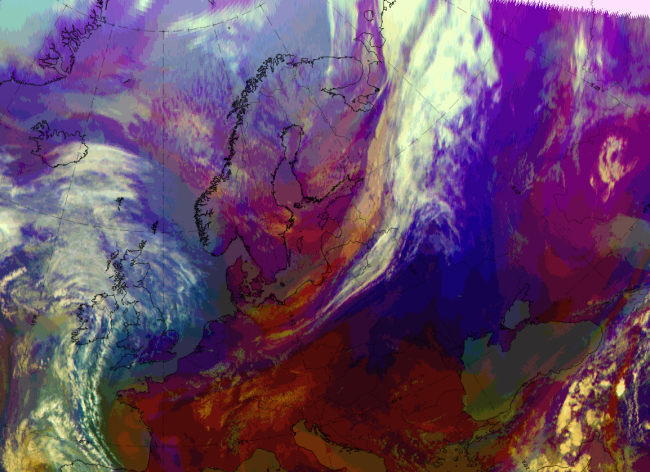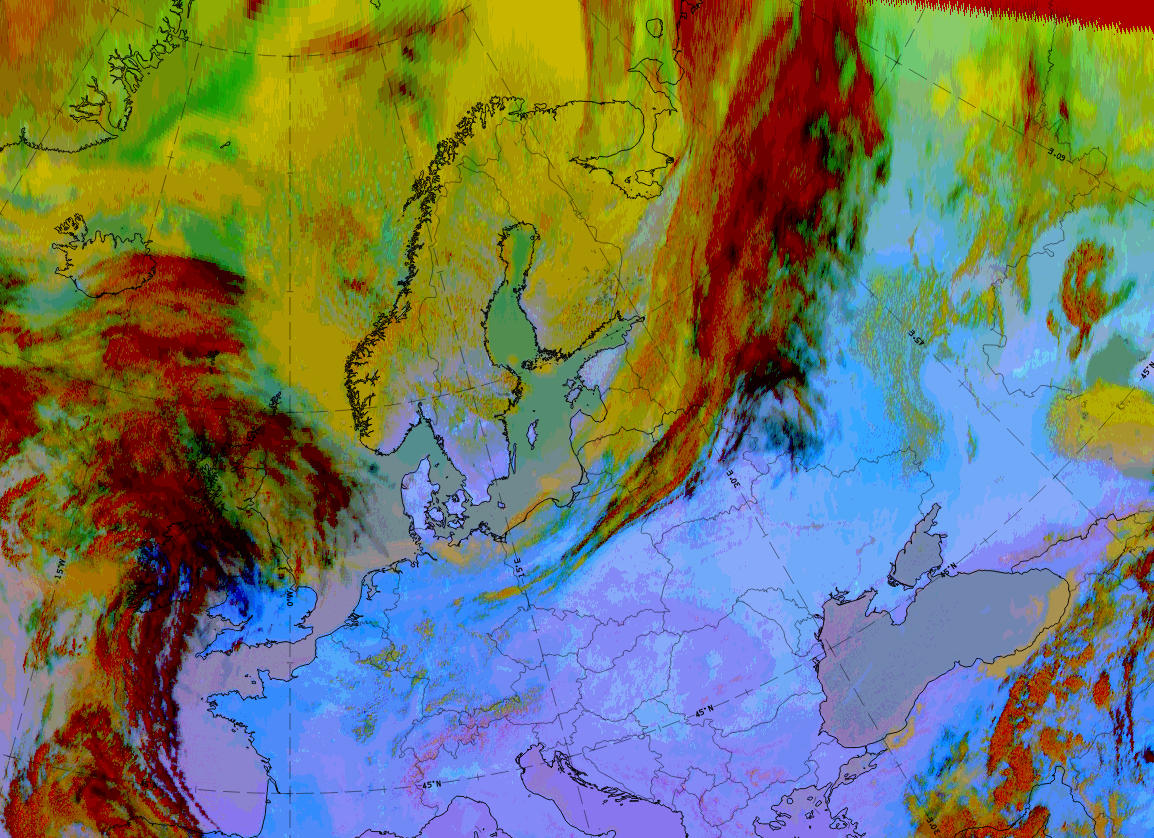Cloud Structure In Satellite Images
Definition: A Split Front is accompanied by a cyclonically curved cloud band, which, contrary to a classical Cold Front (see Cold Front ), contains a distinct double banded structure with cold cloud-top temperatures at the leading edge and warmer cloud-top temperatures at the rear edge.
Appearance in the basic channels
- In the thick cloud band at the leading part of the Split Front, VIS signals are white to grey and IR and WV signals are white, representing a thick, multi-layered cloud band
- In the low cloud band at the rear part of the Split Front, VIS signals are white and IR signals are dark grey to grey, WV signals are either black (if one is using the Meteosat 8 WV 6.2 µm , which shows higher level water vapour) indicating a low cloud band with very dry air above, or are fairly white/light grey if the Meteosat 8 WV 7.3 µm representing the lower atmosphere is used
- In the ideal case the boundary between both cloud bands is marked by a sharp gradient of IR and WV pixel values. In reality only a gradual change of IR and WV grey shading exists
- Some features of a life cycle can be observed:
- often EC shaped cellular clouds develops within and above the low cloud band on the cyclonic side of the jet axis;
- in the WV imagery a black area sometimes develops on the anticyclonic part of the jet axis over the low cloud band of the front, indicating sinking dry air connected with relative streams (see Meteorological physical background);
- in a multi-layered leading cloud band the higher cloud fibres are shifted downstream and the high and low cloud bands become decoupled.
Note: In the literature (especially in the US) the name split front has been used in relation to an upper-level Cold Front. This is comparable to "frontal delay by mountains" and "decoupling of cloud layers at different heights" in this manual (see Orographic Effects on Frontal Cloud ).
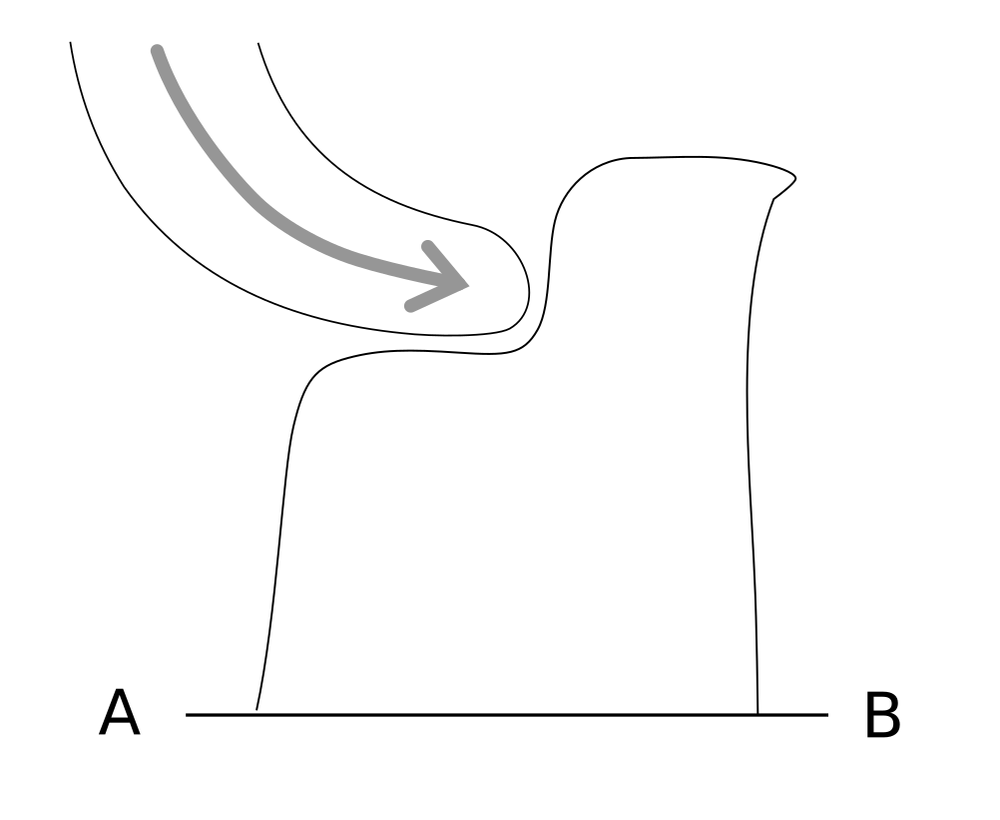 |
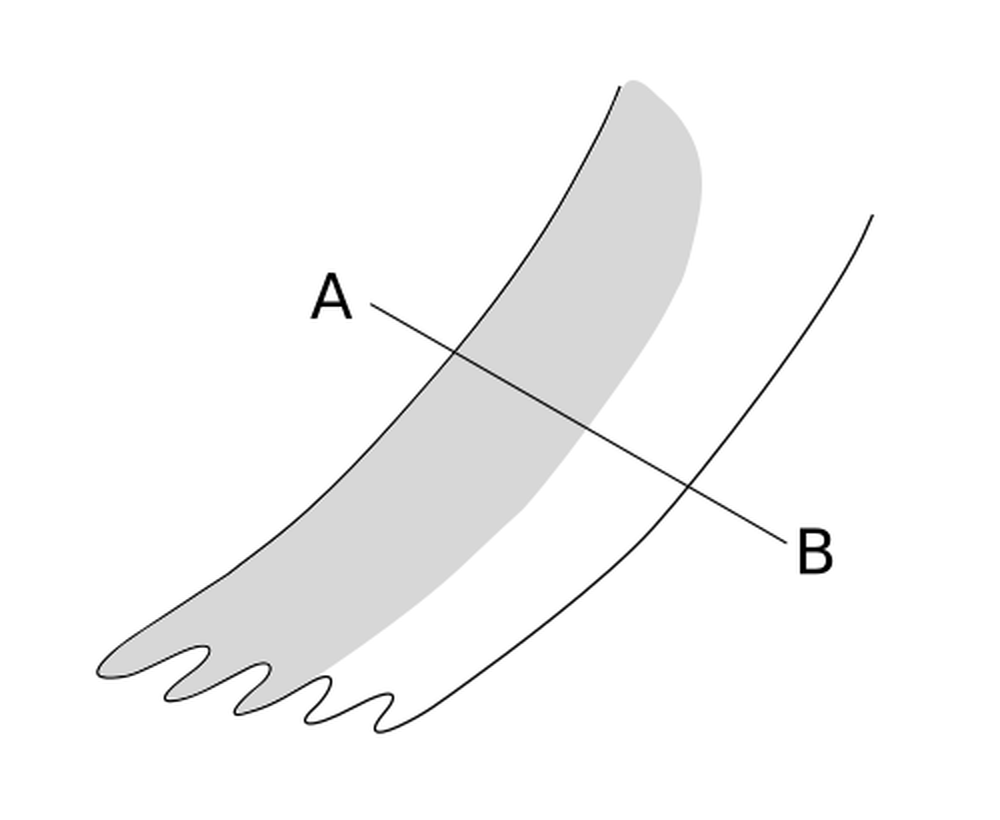 |
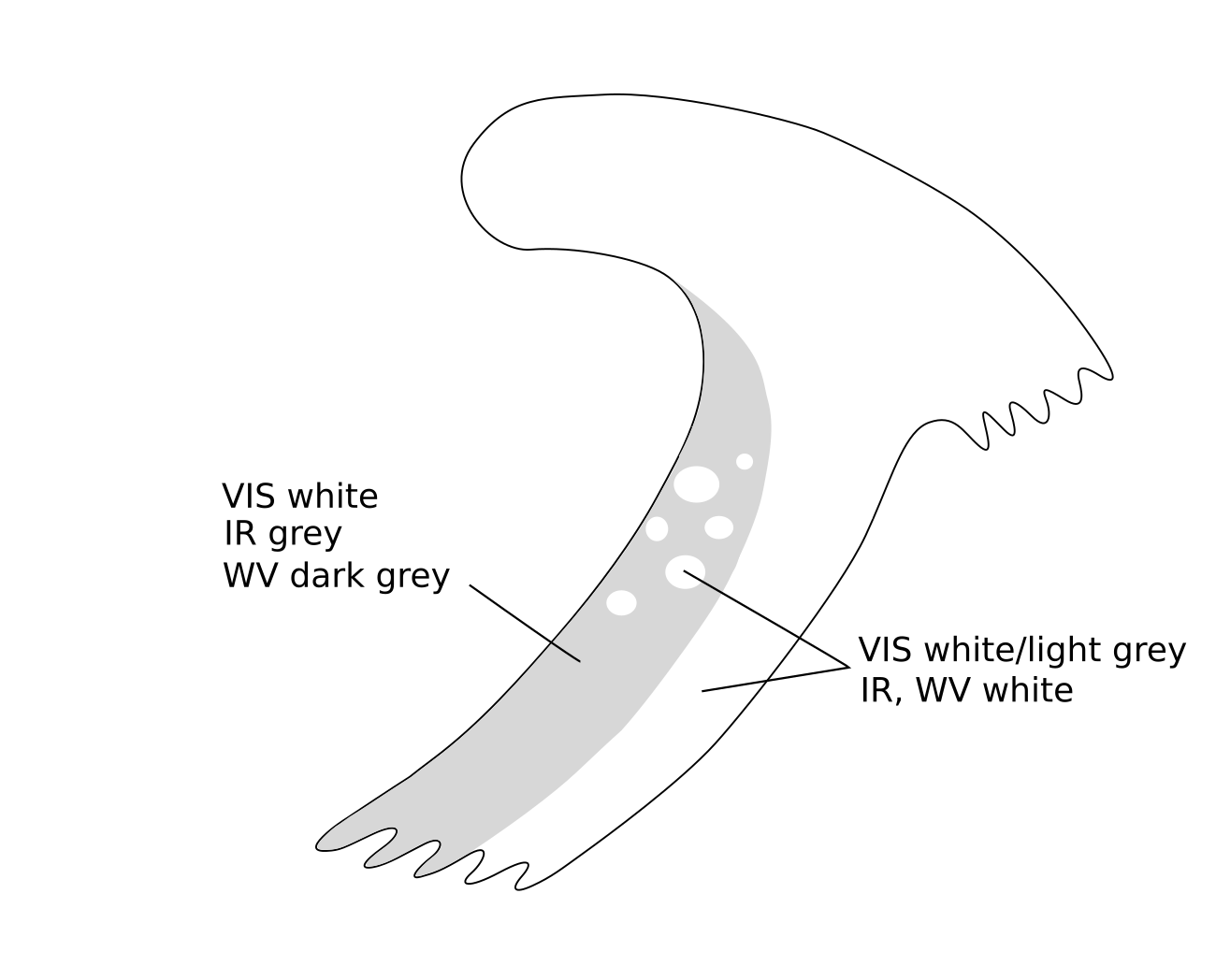 |
Appearance in the basic RGBs:
Airmass RGB
In the Airmass RGB there are usually blue to brown colours ahead of the split front, representing the airmasses in the upper-level trough area of the preceding frontal system. At the rear side there are blue and brownish colours representing the cold and dry air sinking from high latitudes and high altitudes towards the cloud bands of the split front. Contrary to most conceptual frontal models, the dark-brown stream overruns the lower cloud band of the split front.
While the lower cloud band at the rear of the split front has brownish colours, the higher cloud band at the leading side of the split front appears very similarly to that seen in the IR image.
Dust RGB
In the Dust RGB there are blue to pinkish-blue colours on both sides of the cloud band of the split front where there are cloud free areas; other existing, mostly mesoscale, cloud systems appear in ochre colours representing low to mid-level cloud.
The split characteristics of the cloud band belonging to a split front is also the main characteristic in the dust RGB. The lower cloud part at the rear of the system has mainly ochre colours indicating mid-level cloud tops, while the higher cloud part at the leading edge of the system has dark-red colours indicating thick ice clouds. Black fibres can also occur, mostly at the leading cloud edge, representing high translucent cloud fibres. Within the lower cloud part at the rear side, meso scale areas consisting of small dark-red cells can appear. They are connected to the peak of the cyclonic vorticity advection in the left exit region of the crossing jet streak (see Meteorological physical background).
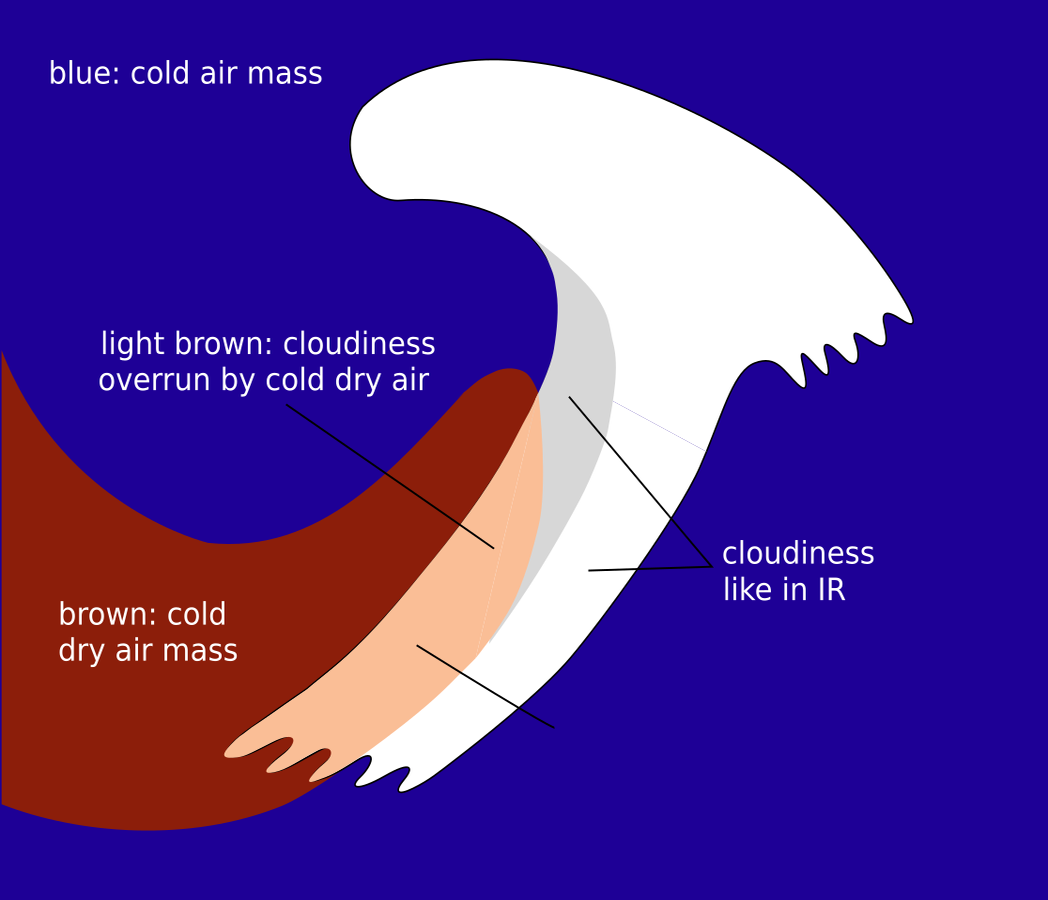 |
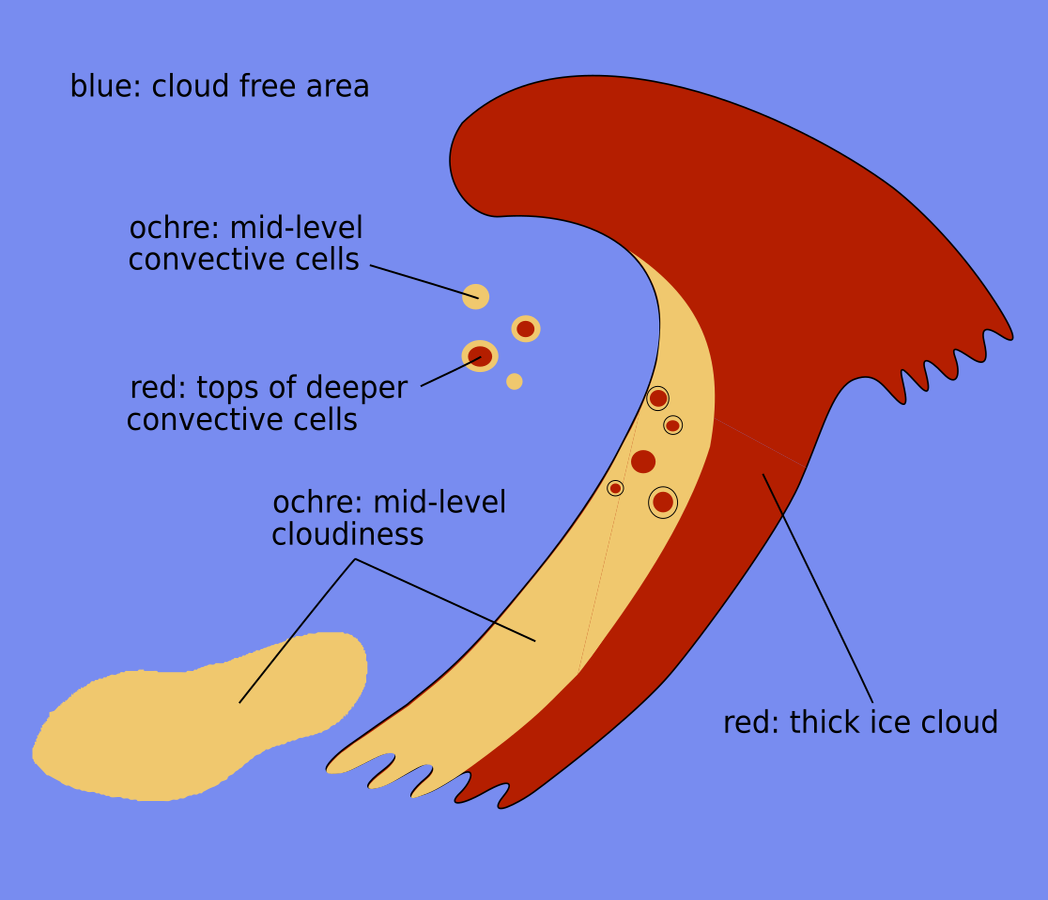 |
Legend: Basic RGBs schematics. Left: Airmass RGB; right: Dust RGB.
The case of 9 April 2020 at 12 UTC is a good example over Northeast Europe. It shows the double structure of the two cloud parts and the overrunning of dry air over the rearward lower cloud part.
|
|
|
|
Legend:
9 April 2020, 12UTC: 1st row: IR (above) + HRV (below); 2nd row: WV (above) + Airmass RGB (below); 3rd row: Dust RGB + image gallery.
*Note: click on the image to access the image gallery (navigate using arrows on keyboard).
| IR | White cloud band at the leading side, grey cloud band at the rear side, representing the two different high cloud parts of the split front. |
| HRV | White to light grey for large parts of both cloud bands. |
| WV | Black stripe along the coastal areas of the Baltic sea and across the Baltic states. This is above the lower cloud part of the split front and represents the sinking, dry air that is responsible for the dissolution of higher clouds. Light grey to white shading in the east, above the higher part of the split front. |
| Airmass RGB | Dark-brown stripe above the lower part of the split front indicating the sinking, dry air which is responsible for the dissolution of the higher cloud tops. Clouds of the higher part of the split front are similar to the IR image. Around the system dark -blue to dark-brown colours indicate the cold and dry air. |
| Dust RGB | Ochre to light-brown colours accompany the lower part of the split front, dark-red colours the thicker part. Some black stripes representing thin ice clouds can be found at the leading eastern and southern part of the split front. The surrounding areas of the split front are mostly blue-coloured, indicating cloud-free ground. |
The area within the lower cloud band in the split front, where thick convective cells are connected to a peak of cyclonic vorticity advection, cannot be seen in every case. The following case of 24 May 2020 shows at 15 UTC such a centre of enhanced cells, which corresponds to the left exit region of a crossing jet streak (enhanced by curvature vorticity in the trough) with a peak of cyclonic vorticity advection there.
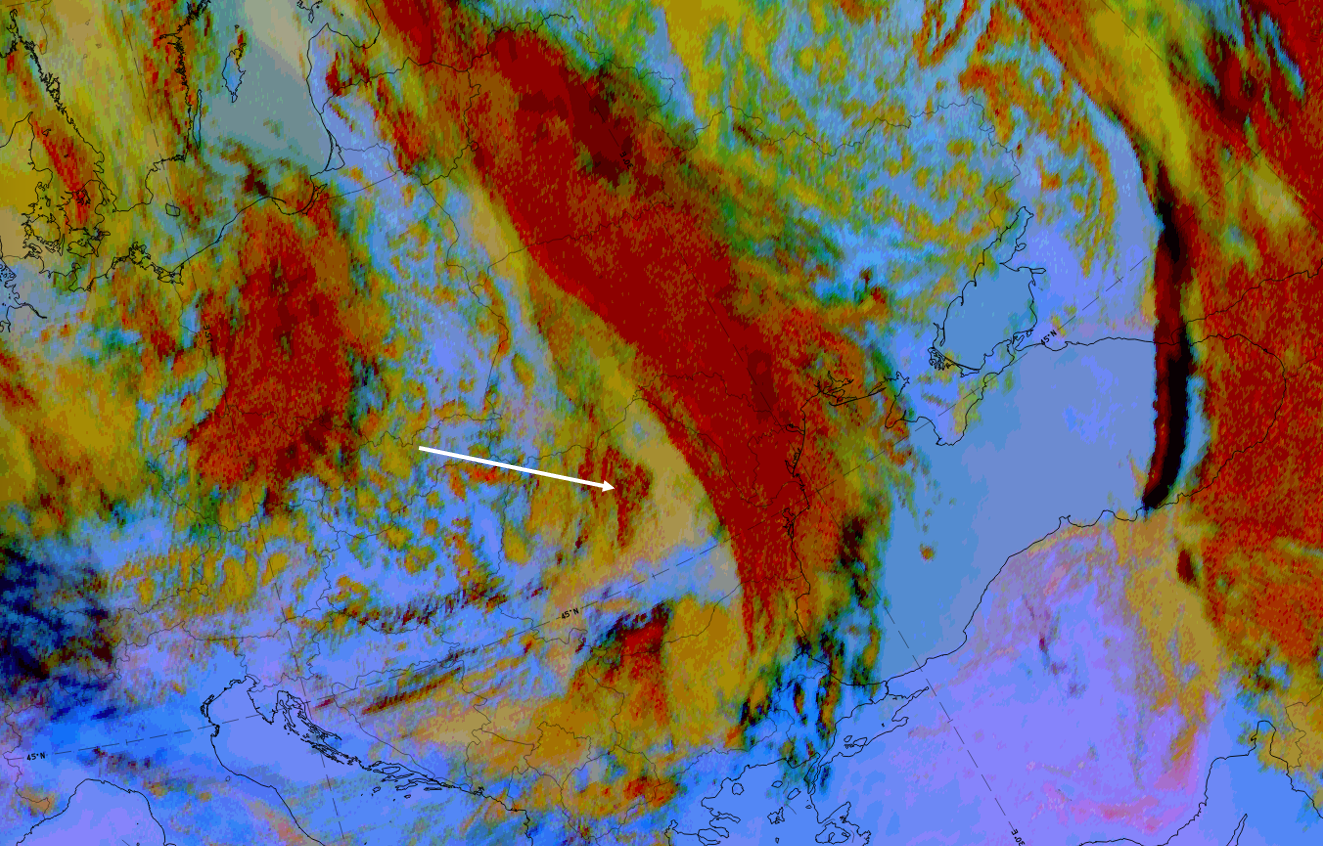 |
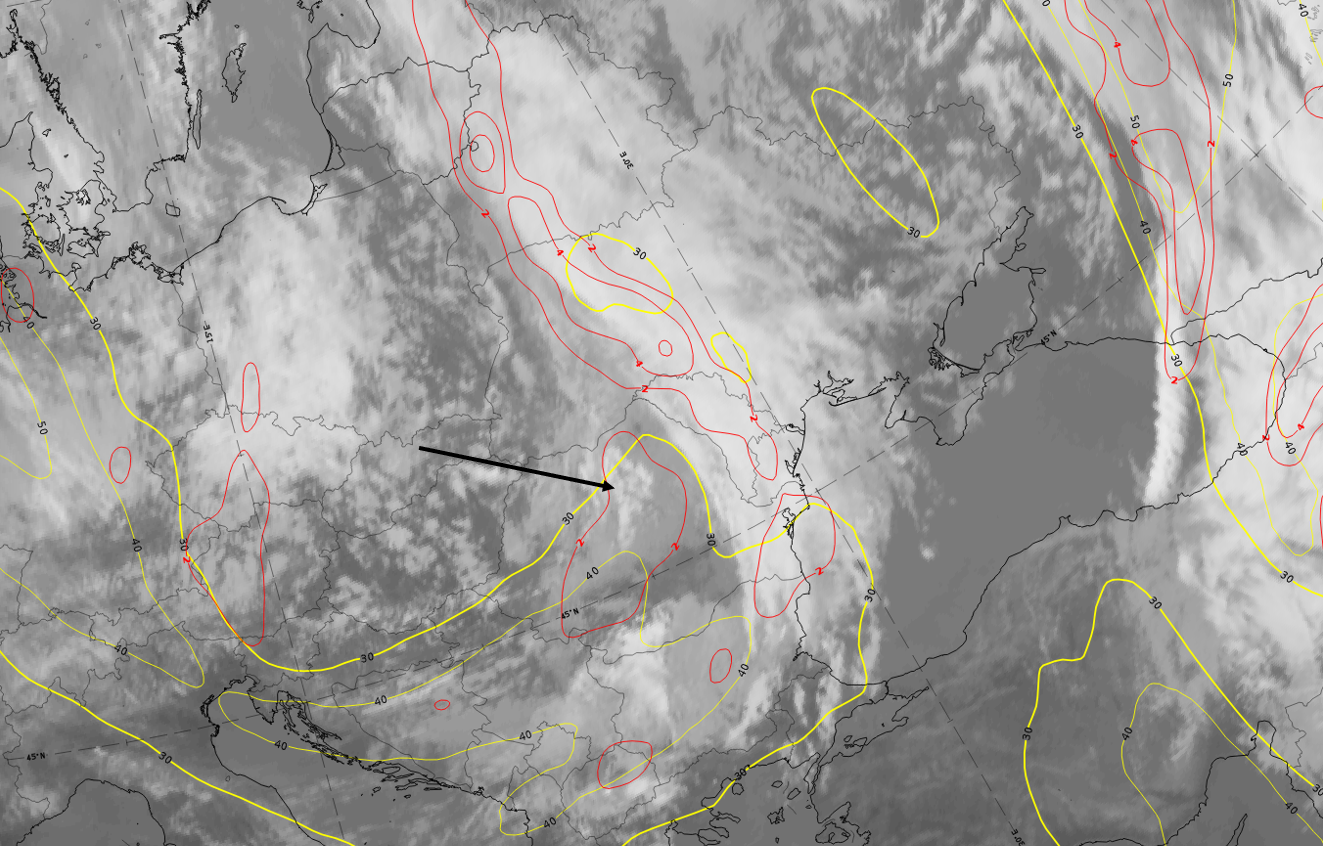 |
Legend: 24 May 2020, 15 UTC
Left: Dust RGB: Right: IR, yellow: isotachs at 250 hPa; red: Cyclonic vorticity advection at 250 hPa.
*Note: click on the image to access the image gallery (navigate using arrows on keyboard).
